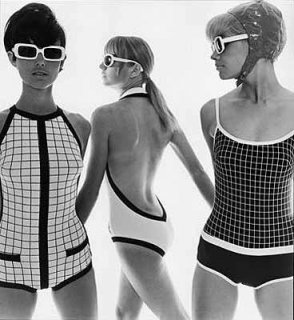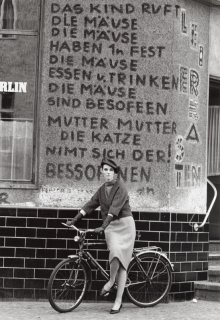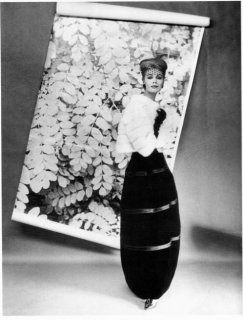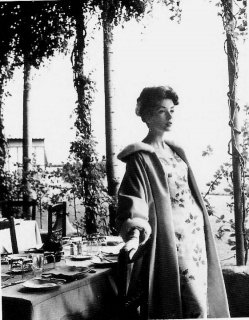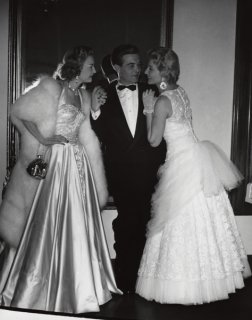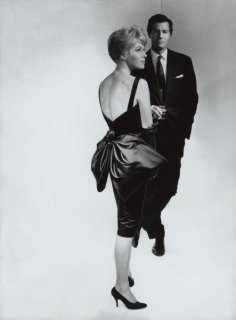-
Share with us... Your Best & Worst Collections of Haute Couture F/W 2025.26
-
Xenforo is upgrading us to version 2.3.7 on Thursday Aug 14, 2025 at 01:00 AM BST. This upgrade includes several security fixes among other improvements. Expect a temporary downtime during this process. More info here
You are using an out of date browser. It may not display this or other websites correctly.
You should upgrade or use an alternative browser.
You should upgrade or use an alternative browser.
F. C. Gundlach - Photographer
- Thread starter Estella*
- Start date
MulletProof
Well-Known Member
- Joined
- Apr 18, 2004
- Messages
- 28,790
- Reaction score
- 7,547
i wish i could see more of his work but that pic in the fourth post is very beautiful. i love the contrast of the pyramids behind..and her mod dress. 

.francesca
about to fall or fly
- Joined
- Jan 7, 2005
- Messages
- 3,951
- Reaction score
- 0
i really love it..i love the contrasts and the compositions!
thanks anna!

thanks anna!

fugfashion
Active Member
- Joined
- May 20, 2005
- Messages
- 2,277
- Reaction score
- 2
Agent Lee
Member
- Joined
- Nov 15, 2009
- Messages
- 46
- Reaction score
- 4
F.C. Gundlach – A Master of Fashion Photography
F.C. Gundlach ranks as the most significant fashion photographer of Germany's post-war years. His name has gone down in the pages of fashion history and even today he still wields great influence on photography in Germany – as an initiator of exhibitions, a collector and as a patron.
A passion for the medium
In Hamburg's Harvestehude district there is a residential street called Parkallee in which one mansion is more splendid than the other. This is where the F.C. Gundlach Foundation has its headquarters. It is the control centre for all the projects organised by F.C. Gundlach and his team. Born in 1926, he became Germany's leading fashion photographer of the 50s and 60s and one might think he would now like to rest on his laurels – no way. “I am still out there – on the edge,” he says. Although Gundlach has not actually done any professional photography since the beginning of the 90s, he is still obsessed with the medium – a passion he cannot let go of.
A impressive showcase of the master's work
His current project is the exhibition, F.C. Gundlach – Das fotografische Werk (The Oeuvre of F.C. Gundlach). It was on in the House of Photography at the Deichtorhallen galleries in Hamburg in September 2008 and will be shown in the Martin-Gropius-Bau in Berlin from 20 November 2009 until 14 March 2010. The project brought together four curators who have compiled an impressive showcase of the master's work (350 exhibits) which also serves as an excellent overview of the development of fashion photography from the 1950s to the 1980s.
“In 1950/51 I was in Paris. That was so important for me as back then Paris was the cultural hub of the world,” F.C. Gundlach tells enthusiastically. He did his training at a private school of photography, he worked as an assistant, then as a photo-journalist. In Paris he soon came into contact with film; he did some portrait photos of stars and had them published in what was then a very popular magazine – Film und Frau. “Then the editor-in-chief said he would like me to do some fashion photos. He was convinced that I could photograph fashion and that is how my career as a fashion photographer started.”
A career as a fashion photographer
With the help of German film stars like Ruth Leuwerik and Nadja Tiller Gundlach managed to give fashion a dramatic touch. Whenever the new collections were to be presented in Berlin, the photographer moved into a studio on the Kurfürstendamm for three weeks. He attended the shows in Paris - Dior, Jacques Fath. “The shows back then were almost like sacred rituals. No choreography, no music and nobody was allowed to take photos or make sketches.” In fact the world of fashion photography in the 50s was a completely different one to that of today. There were no stylists, no visagists at fashion shoots. “I had to do it all myself,” says Gundlach. The models were almost always the mannequins for whom the clothes had been tailored and who modelled them in the salons.
When it came to the collections the utmost secrecy had to be preserved. The shoots often had to take place in the immediate vicinity of the fashion house. When shooting on location the models had to drape the clothes in white sheets that were then removed for a few minutes for the shoot. You had to be quick. Not the most ideal working conditions, you might think, but F.C. Gundlach developed his own visual language. He does not simply project a fashion image, he interprets it. His photographs are full of dramatic ideas and yet still manage to impart a formal severity of composition.
“A fashion photo has to reflect the spirit of the times”
“A fashion photo has to have a fashion message, otherwise its purpose has been defeated,” this is still the way he thinks today. It was the clothes themselves that helped him to develop the ideas for his photos. “The cut of the cloth, the arrangement of the folds could be the subject of an image,” he says. He was able to show the cut of the cloth by making the model stride forth, but that is just one aspect among many. “A fashion photo has to reflect the spirit of the times.” And the spirit of the times was exactly the thing F.C. Gundlach had an unfaltering instinct for.
“At the end of the 50s I felt that the times were changing – society was in flux and, along with it, style as well,” he explains. “I bought one of those compact cameras that were uncommon at the time and did a series of photos for Nino Stoffe.” He positioned the model in a dockside bar, on the dockside steps, and included passers-by in the picture. This is how the fashion photo-article came about – a method that has not lost any of its impact even today. F.C. Gundlach, who first got the photo-article ball rolling, always managed to embrace these impulses in his fashion photography.
Many years of collaboration with the German women's magazine, Brigitte
If the 50s were the decade of the lady of elegance, of sophisticated clothes and haute couture, then the 60s heralded in the desire for political change, emancipation and the age of the prêt-à-porter collection. And F.C. Grundlach now had a new key account – the high-circulation German women's magazine, Brigitte. The magazine's role model was not the elegant lady, but the fashionable young woman who had both feet firmly on the ground. In collaboration with the magazine's editor, Barbara Buffa, F.C. Gundlach succeeded in capturing the tastes of the moment like no other.
Between 1963 and 1986 F.C. Gundlach produced more than 5,500 fashion pages as well as 180 covers for Brigitte. They sent him on jobs to Africa, South America and the USA. Alongside the photo-article approach he also became much more inspired by the fine arts – op-art and pop-art being two genres that he, as a collector of art, focused on. One series of his photos that was inspired by op-art came about in Egypt in 1966, where the models' heads, looking like round balls in bathing caps, were placed in stark contrast to the classic architectural form of the triangular pyramids.
This caused an almighty fracas. “The editor called me and said that the editor-in-chief found the series much too highbrow,” he recounts. Then that is the end of us working together, he replied, and hung up – as Gundlach tells the tale. The photos were then published under the title “All day long at the beach”. Apart from that F.C. Gundlach has nothing else negative to say about his employer. No rows. No dissatisfaction. He saw himself as a life-long “service provider” and member of the editorial staff and this enabled him to produce a huge amount of outstanding work.
F.C. Gundlach - the phenomenon
The phenomenon that is F.C. Gundlach and his influence on German photography is however not just restricted to the field of photography. First of all he set up a service company for photographers with a laboratory, rental services and rental studios – called CC that later became PPS. After his experiences in New York he wanted to create better conditions for photographers in Germany. In 1975 he established the PPS. Galerie, in which he exhibited the works of Irving Penn, Richard Avedon, Robert Mapplethorpe, Nan Goldin and Wolfgang Tillmans for the first time in Germany. In 1988 he became a professor at the University of the Arts in Berlin. He is still as curious as ever, as can be seen by the long list of magazines he has taken out a subscription with.
Gundlach was the initiator of the Triennale der Photographie, a photography festival in Hamburg, and he is the founding father and director of the Haus der Photographie (House of Photography) which he has endowed with his own collection of about 7,000 items on permanent loan – Das Bild des Menschen in der Fotografie (The image of the human being in photography). F.C. Gundlach's commitment to photography extends way beyond the boundaries of his own work. He has done so much for German photography in so many areas that even today's younger photographers reverently refer to him as “F.C.”.
F.C. Gundlach. Das fotografische Werk,
(The Oeuvre of F.C. Gundlach) curated by Klaus Honnef and Hans-Michael Koetzle in collaboration with Sebastian Lux and Ulrich Rüter. The Steidl-Verlag publishing house has brought out an accompanying book with the same title.
source: goethe.de/kue/des/prj/mod/thm/en3633239.htm
F.C. Gundlach ranks as the most significant fashion photographer of Germany's post-war years. His name has gone down in the pages of fashion history and even today he still wields great influence on photography in Germany – as an initiator of exhibitions, a collector and as a patron.
A passion for the medium
In Hamburg's Harvestehude district there is a residential street called Parkallee in which one mansion is more splendid than the other. This is where the F.C. Gundlach Foundation has its headquarters. It is the control centre for all the projects organised by F.C. Gundlach and his team. Born in 1926, he became Germany's leading fashion photographer of the 50s and 60s and one might think he would now like to rest on his laurels – no way. “I am still out there – on the edge,” he says. Although Gundlach has not actually done any professional photography since the beginning of the 90s, he is still obsessed with the medium – a passion he cannot let go of.
A impressive showcase of the master's work
His current project is the exhibition, F.C. Gundlach – Das fotografische Werk (The Oeuvre of F.C. Gundlach). It was on in the House of Photography at the Deichtorhallen galleries in Hamburg in September 2008 and will be shown in the Martin-Gropius-Bau in Berlin from 20 November 2009 until 14 March 2010. The project brought together four curators who have compiled an impressive showcase of the master's work (350 exhibits) which also serves as an excellent overview of the development of fashion photography from the 1950s to the 1980s.
“In 1950/51 I was in Paris. That was so important for me as back then Paris was the cultural hub of the world,” F.C. Gundlach tells enthusiastically. He did his training at a private school of photography, he worked as an assistant, then as a photo-journalist. In Paris he soon came into contact with film; he did some portrait photos of stars and had them published in what was then a very popular magazine – Film und Frau. “Then the editor-in-chief said he would like me to do some fashion photos. He was convinced that I could photograph fashion and that is how my career as a fashion photographer started.”
A career as a fashion photographer
With the help of German film stars like Ruth Leuwerik and Nadja Tiller Gundlach managed to give fashion a dramatic touch. Whenever the new collections were to be presented in Berlin, the photographer moved into a studio on the Kurfürstendamm for three weeks. He attended the shows in Paris - Dior, Jacques Fath. “The shows back then were almost like sacred rituals. No choreography, no music and nobody was allowed to take photos or make sketches.” In fact the world of fashion photography in the 50s was a completely different one to that of today. There were no stylists, no visagists at fashion shoots. “I had to do it all myself,” says Gundlach. The models were almost always the mannequins for whom the clothes had been tailored and who modelled them in the salons.
When it came to the collections the utmost secrecy had to be preserved. The shoots often had to take place in the immediate vicinity of the fashion house. When shooting on location the models had to drape the clothes in white sheets that were then removed for a few minutes for the shoot. You had to be quick. Not the most ideal working conditions, you might think, but F.C. Gundlach developed his own visual language. He does not simply project a fashion image, he interprets it. His photographs are full of dramatic ideas and yet still manage to impart a formal severity of composition.
“A fashion photo has to reflect the spirit of the times”
“A fashion photo has to have a fashion message, otherwise its purpose has been defeated,” this is still the way he thinks today. It was the clothes themselves that helped him to develop the ideas for his photos. “The cut of the cloth, the arrangement of the folds could be the subject of an image,” he says. He was able to show the cut of the cloth by making the model stride forth, but that is just one aspect among many. “A fashion photo has to reflect the spirit of the times.” And the spirit of the times was exactly the thing F.C. Gundlach had an unfaltering instinct for.
“At the end of the 50s I felt that the times were changing – society was in flux and, along with it, style as well,” he explains. “I bought one of those compact cameras that were uncommon at the time and did a series of photos for Nino Stoffe.” He positioned the model in a dockside bar, on the dockside steps, and included passers-by in the picture. This is how the fashion photo-article came about – a method that has not lost any of its impact even today. F.C. Gundlach, who first got the photo-article ball rolling, always managed to embrace these impulses in his fashion photography.
Many years of collaboration with the German women's magazine, Brigitte
If the 50s were the decade of the lady of elegance, of sophisticated clothes and haute couture, then the 60s heralded in the desire for political change, emancipation and the age of the prêt-à-porter collection. And F.C. Grundlach now had a new key account – the high-circulation German women's magazine, Brigitte. The magazine's role model was not the elegant lady, but the fashionable young woman who had both feet firmly on the ground. In collaboration with the magazine's editor, Barbara Buffa, F.C. Gundlach succeeded in capturing the tastes of the moment like no other.
Between 1963 and 1986 F.C. Gundlach produced more than 5,500 fashion pages as well as 180 covers for Brigitte. They sent him on jobs to Africa, South America and the USA. Alongside the photo-article approach he also became much more inspired by the fine arts – op-art and pop-art being two genres that he, as a collector of art, focused on. One series of his photos that was inspired by op-art came about in Egypt in 1966, where the models' heads, looking like round balls in bathing caps, were placed in stark contrast to the classic architectural form of the triangular pyramids.
This caused an almighty fracas. “The editor called me and said that the editor-in-chief found the series much too highbrow,” he recounts. Then that is the end of us working together, he replied, and hung up – as Gundlach tells the tale. The photos were then published under the title “All day long at the beach”. Apart from that F.C. Gundlach has nothing else negative to say about his employer. No rows. No dissatisfaction. He saw himself as a life-long “service provider” and member of the editorial staff and this enabled him to produce a huge amount of outstanding work.
F.C. Gundlach - the phenomenon
The phenomenon that is F.C. Gundlach and his influence on German photography is however not just restricted to the field of photography. First of all he set up a service company for photographers with a laboratory, rental services and rental studios – called CC that later became PPS. After his experiences in New York he wanted to create better conditions for photographers in Germany. In 1975 he established the PPS. Galerie, in which he exhibited the works of Irving Penn, Richard Avedon, Robert Mapplethorpe, Nan Goldin and Wolfgang Tillmans for the first time in Germany. In 1988 he became a professor at the University of the Arts in Berlin. He is still as curious as ever, as can be seen by the long list of magazines he has taken out a subscription with.
Gundlach was the initiator of the Triennale der Photographie, a photography festival in Hamburg, and he is the founding father and director of the Haus der Photographie (House of Photography) which he has endowed with his own collection of about 7,000 items on permanent loan – Das Bild des Menschen in der Fotografie (The image of the human being in photography). F.C. Gundlach's commitment to photography extends way beyond the boundaries of his own work. He has done so much for German photography in so many areas that even today's younger photographers reverently refer to him as “F.C.”.
F.C. Gundlach. Das fotografische Werk,
(The Oeuvre of F.C. Gundlach) curated by Klaus Honnef and Hans-Michael Koetzle in collaboration with Sebastian Lux and Ulrich Rüter. The Steidl-Verlag publishing house has brought out an accompanying book with the same title.
source: goethe.de/kue/des/prj/mod/thm/en3633239.htm
Agent Lee
Member
- Joined
- Nov 15, 2009
- Messages
- 46
- Reaction score
- 4
Agent Lee
Member
- Joined
- Nov 15, 2009
- Messages
- 46
- Reaction score
- 4
cont., source: fcgundlach.com
Attachments
-
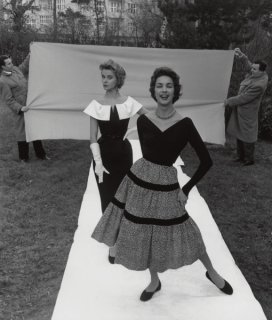 Candy Tannev und Elfi Wildfeuer, Chefredakteur Curt Waldenburger und sein Fahrer assistieren.jpg226.2 KB · Views: 2
Candy Tannev und Elfi Wildfeuer, Chefredakteur Curt Waldenburger und sein Fahrer assistieren.jpg226.2 KB · Views: 2 -
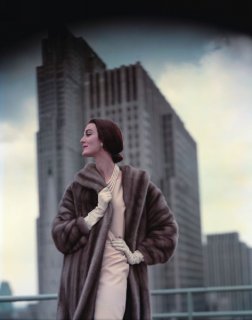 Carmen, Nerzmantel von Levermann.jpg38.3 KB · Views: 2
Carmen, Nerzmantel von Levermann.jpg38.3 KB · Views: 2 -
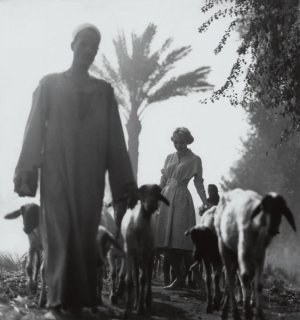 Christa Reimer.jpg173.5 KB · Views: 2
Christa Reimer.jpg173.5 KB · Views: 2 -
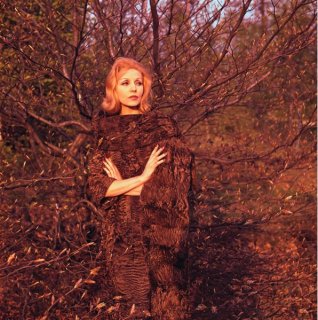 Denise Sarrault, Breitschwanz-Mantel von Berger.jpg147.3 KB · Views: 4
Denise Sarrault, Breitschwanz-Mantel von Berger.jpg147.3 KB · Views: 4 -
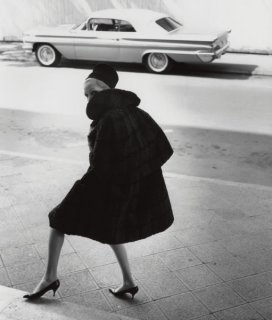 Denise Sarrault, Capemantel aus gefärbtem Persianer.jpg158.4 KB · Views: 4
Denise Sarrault, Capemantel aus gefärbtem Persianer.jpg158.4 KB · Views: 4
Agent Lee
Member
- Joined
- Nov 15, 2009
- Messages
- 46
- Reaction score
- 4
cont.2, same source
Attachments
-
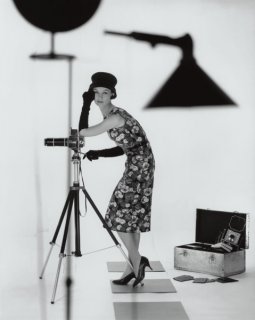 Bambi, Futteralkleid von Horn.jpg117.1 KB · Views: 4
Bambi, Futteralkleid von Horn.jpg117.1 KB · Views: 4 -
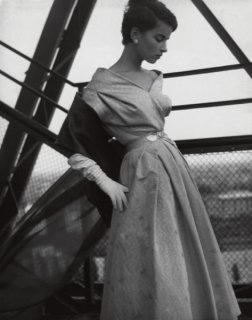 Bambi (Katharina Denzinger), Cocktailkleid von Lindenstaedt & Brettschneider.jpg149 KB · Views: 3
Bambi (Katharina Denzinger), Cocktailkleid von Lindenstaedt & Brettschneider.jpg149 KB · Views: 3 -
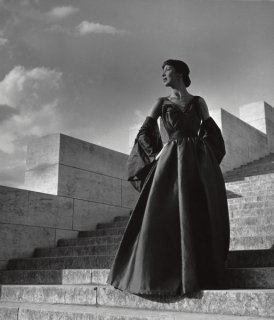 Abendkleid von Manguin.jpg173 KB · Views: 2
Abendkleid von Manguin.jpg173 KB · Views: 2 -
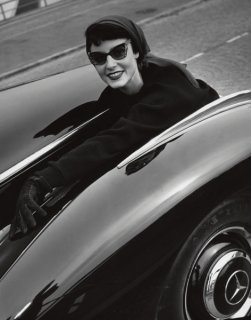 Doris Piepenburg, Brille von Optik Meier.jpg149.5 KB · Views: 2
Doris Piepenburg, Brille von Optik Meier.jpg149.5 KB · Views: 2 -
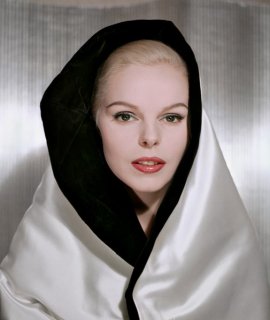 Grit Hübscher, weißer Atlasmantel von Sinaida Rudow.jpg46.5 KB · Views: 4
Grit Hübscher, weißer Atlasmantel von Sinaida Rudow.jpg46.5 KB · Views: 4
Similar Threads
Users who are viewing this thread
Total: 1 (members: 0, guests: 1)







 it's very lovely, i really like the pic of romy, and also the pyramid shot.
it's very lovely, i really like the pic of romy, and also the pyramid shot.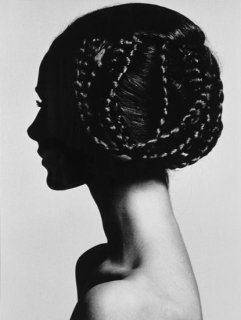

 (photography-now.com)
(photography-now.com)